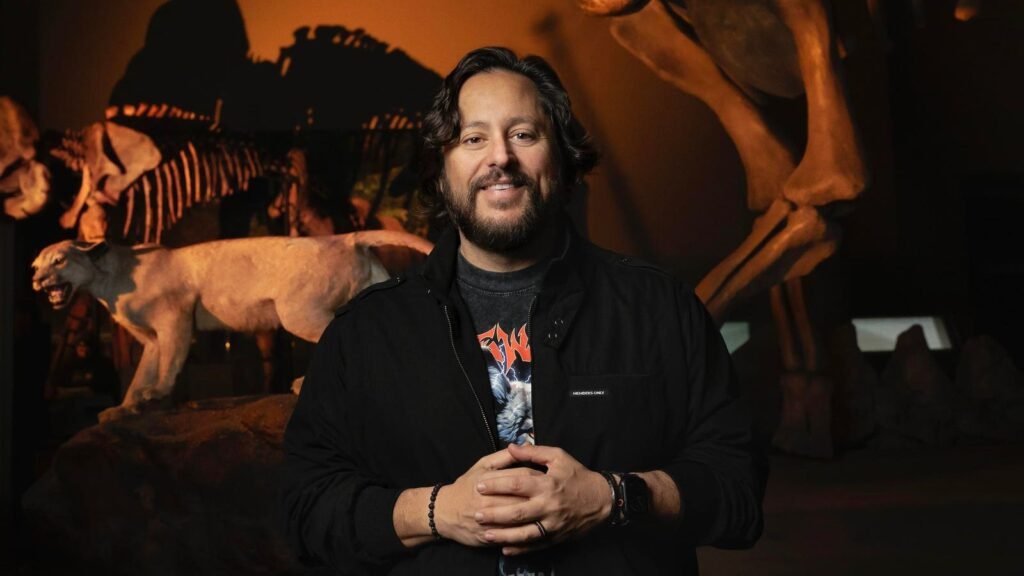A new billionaire from efforts to bring back the woolly mammoth: “What we’re excited about is that we are solving hard problems,” said Colossal Biosciences’ cofounder and CEO Ben Lamm.
collosal
Colossal Biosciences cofounder and CEO Ben Lamm is now worth $3.7 billion after the company’s recent fundraise at a valuation of $10.2 billion. However, the company has not yet generated revenue from reviving extinct animals or saving endangered ones.
By
Amy Feldman
, Forbes Staff
Serial entrepreneur Ben Lamm and Harvard geneticist George Church founded Colossal Biosciences in 2021 with the goal of bringing back the woolly mammoth. This ambitious idea has real-world implications for the environment, climate change, and healthcare if successful.
Following a recent funding round where the company raised $200 million at a $10.2 billion valuation, led by TWG Global, CEO Lamm’s net worth is estimated at $3.7 billion by Forbes. Church, the geneticist behind the concept, does not hold equity in Colossal.
Church had been sequencing the woolly mammoth’s genome since 2008 and was inspired by his childhood fascination with extinct creatures and expertise in genomic sequencing. His collaboration with Lamm led to the establishment of Colossal, which aims to revive extinct species using genetic engineering techniques.
Despite the company’s high valuation, it has yet to generate revenue from its de-extinction efforts. Colossal has attracted significant investment from top firms and investors, including Breyer Capital and Draper Associates. The company’s focus on cutting-edge science has garnered attention and support from individuals and organizations interested in innovative conservation approaches.
He mentioned that if someone had told him at the beginning of 2024 that governments would pay him to do these things, he would have most likely doubted it. However, now there seems to be a change in that perspective. Colossal is currently engaged in discussions with two governments, one of which is an island nation, regarding biodiversity contracts. Although no agreements have been signed yet, Lamm stated that the pursuit of de-extinction technology can be monetized and licensed. The reintroduction of animals back into their natural habitats could potentially generate income through carbon credits, nature credits, and tourism taxes.
One of the governments that Colossal is in talks with is focused on saving a species that is on the verge of extinction and predominantly male. Lamm explained that the scarcity of females and their seasonal breeding cycles present challenges in terms of genetic diversity and timing. The government’s conservation efforts are projected to span 25 years and cost $350 million, but there is still a risk of the species dying out.
Colossal proposes an alternative approach by genetically engineering females to breed continuously instead of seasonally, albeit raising ethical concerns. By charging $100 million for this endeavor, Colossal ensures the species’ preservation, accelerates the timeline by 20 years, and saves the government hundreds of millions of dollars.
The importance of saving animals from extinction is underscored by the fact that over 46,300 species, representing 28% of those assessed, are at risk of extinction according to the International Union for Conservation of Nature. The loss of biodiversity has detrimental effects on the planet and disrupts entire ecosystems.
While the idea of genetically modifying species and releasing them into the wild to combat biodiversity loss or mitigate climate change is contentious, proponents like Church highlight the positive impact it can have on ecosystems. However, critics such as Flessa caution against the potential risks and ethical considerations associated with such interventions.
Despite the challenges and ethical dilemmas, Colossal’s scientific advancements show promise in addressing pressing environmental issues. From genome editing to artificial uterus technology, Colossal’s research could have implications beyond species revival, potentially influencing human healthcare advancements.
Looking ahead, Lamm envisions the creation of biovaults containing tissue samples from extinct and endangered species, as well as securing government contracts for species revival or conservation efforts. By demonstrating tangible progress in scientific research, Colossal aims to dispel doubts about the feasibility and timeline of de-extinction initiatives. He emphasized that our current focus is primarily on the science because if the science doesn’t succeed, everything else is irrelevant.


